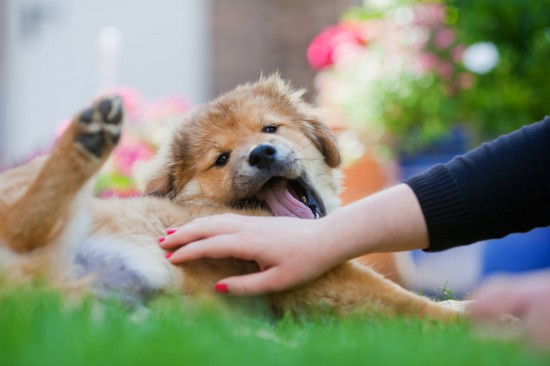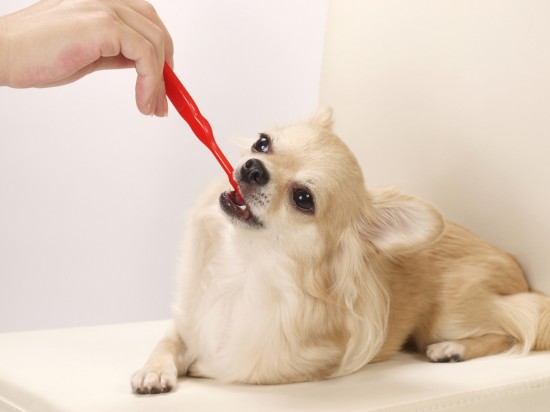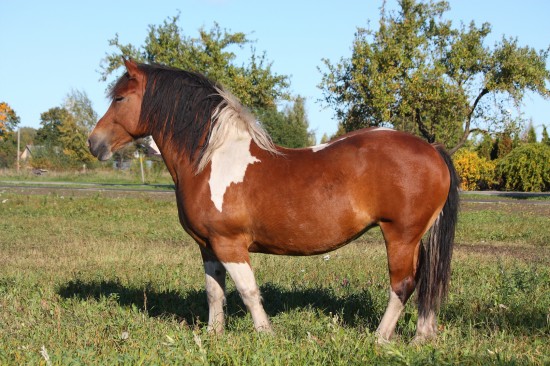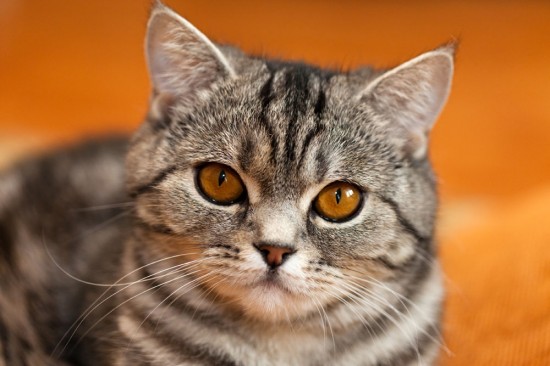

Owning a horse or pony that weaves, box-walks, crib-bites or wind-sucks can be challenging at times, especially for those that have no prior experience of these behaviours. Not only do the audio and visual effects tend to irritate those with less patience, but habits such as these tend to reduce the value of the animal as well as causing damage to the stable and its surrounds.
What is more, limitations can arise when it comes to finding somewhere to keep your swaying, pacing or gulping friend. Many livery yards will not accept a horse that displays any of these 'vices', as traditionalists believe that other equine residents may copy the action, although more recent research suggests that this is unlikely to happen. The greatest concern for most owners, however, is the various health problems that can accompany each of these behaviours.
For many years the likes of cribbing, weaving, box-walking and wind-sucking have been referred to as 'vices', but this is a wholly inappropriate label as it suggests that the horse is making a conscious decision to be wicked. Equine behaviourists prefer to use the term 'stereotypy', which describes a repetitive behaviour that is apparently functionless - in other words, an action that is repeated over and over with no obvious sign of gain.
Contrary to popular opinion, stereotypies are not simply a result of boredom but are a response to stress. They usually develop when the horse has been deprived of regular grazing, adequate exercise, and/or interaction with other horses - all of which are 'normal behaviour patterns'.
When the horse needs to express a normal behaviour pattern but is unable to do so (usually due to confinement), he will experience frustration which may, in some cases, be released in the form of a 'displacement activity'. Take for example, the following scenario. A horse that is alone is his stable hears or sees other horses approaching. Instinctively, he wishes to escape this unnatural feeling of isolation by running to the others to make physical contact, but the stable door is preventing him from carrying out these natural behaviours of exercise and social interaction. The level of tension experienced is so great that he needs to find an outlet for his stress, and so he begins to weave.
It is important to recognise, however, that trying to control a situation like this by placing the horse somewhere where he cannot hear or see others would be wrong. Essentially, the cause of the weaving would be the horse's isolation, and the approach of others merely a stimulus.
In many such cases, the horse's ability to learn through association will lead to the range of stimuli for the abnormal behaviour being broadened considerably, and as a result the behaviour will begin to occur more and more frequently until it finally becomes 'established'. Let us return to the previous scenario as an example.
The stabled horse is weaving whenever he hears other horses approach. During one instance, a person appears on the yard and shouts at him to stop. The early stages of weaving have just been rewarded by social contact, albeit a ticking off from a human. So now the horse weaves whenever he hears people approaching. Therefore, when his owner appears in the evening the horse begins to weave yet again, and as is customary for the time of day, his owner feeds him. Not only has the horse just been rewarded for weaving once more, but he now has a third and fourth stimuli; over time and through association, the horse is now likely to weave whenever his body clock tells him that it is teatime, and whenever he hears his feed being made, and/or sees it being brought towards him.
After this type of behaviour has become established, it develops into what is known as a 'behavioural scar'. This means that even if the initial problem is rectified (which in this case may take the form of regular turn-out with others), the behaviour will continue to persist at times of excitement or stress, and whenever triggered by a stimuli. Stereotypies are nearly impossible to eradicate once established, and efforts to prevent them are likely to exasperate the problem as they usually create further tension.
Locomotor stereotypies are thought to be the horse's response to stress caused by confinement - the inability to get to where he wants to go - and involve repetitive movement as a substitute for the desired behaviour patterns.
Horses that weave can be seen to sway their head and necks rhythmically from side to side, and many will also shift their weight repeatedly from one foreleg to the other, with severe cases crossing their front legs as they do so (as if dancing) as well as displaying movement behind. Once established, this behaviour can take place in the field (usually behind or over the gate) but is more commonly seen in the stable. Although many yard owners insist on anti-weaving bars being erected on the stable door of the offender in an attempt to stop the neck movement, most horses that weave will continue to do so behind these grills, sometimes more frantically due to the added sense of confinement. However, stable mirrors have been known to reduce weaving significantly, as it is thought that they mimic social contact to a certain extent. Regular and prolonged turnout will also help to minimise periods of stress. Whilst this stereotypy is relatively harmless, constant weaving can place extra strain on the horse's joints and cause abnormal wear of the hooves. The floor of the stable can also become worn down after time.
Box-walking is a term used to describe a repetitive pacing back and forth or around the stable that takes up a large part of the horse's resting and eating time. Animals that display this stereotypy often seem unable to stop the action. It has been suggested that box-walking is a stress response to having the natural behaviour patterns of exercise and moving around to graze thwarted. Increased forage and exercise may reduce the levels of pacing in some horses, and a small percentage of owners have reported the use of toys, especially feed balls, to be helpful. Placing forage at intervals around the stable has the potential of slowing the horse if he decides to eat as he walks around, and this will bear a closer resemblance to the act of grazing. It can be difficult to maintain the weight of a box-walker, who also suffers the further risk of damage to ligaments and tendons, and changes to management are highly advisable.
Crib-biting and wind-sucking are two similar oral stereotypies that are often confused. A crib-biting horse will use its incisors to grasp a fixed surface (usually the top of a stable door or fencing post), before pulling back and arching his neck, often making a grunting noise as he does so. A wind-sucker performs much the same action only without grasping onto a surface.
Whilst it was previously thought that crib-biters and wind-suckers gulp and then swallow air, recent research has suggested this to be untrue; findings have shown that these horses immediately expel the air back out from the mouth so that very little, if any, reaches the stomach. Nonetheless, evidence shows that these behaviours are linked to gastrointestinal problems such as colic and ulcers, and whilst it was originally thought that the stereotypy was the cause of such ailments, it may now be the case that that these two behaviours occur as a result of gastrointestinal damage and are a coping mechanism for abdominal discomfort. Both are known to produce a release of endorphins, and one theory suggests they may even reduce levels of acid in the stomach.
Whereas locomotive stereotypies are connected with exercise, oral stereotypies are strongly associated with food, and there is increasing evidence to suggest that crib-biting and wind-sucking are linked to diets that are too high in starch and sugars, and too low in forage. Therefore, feeding concentrates to horses that display these behaviours should be avoided as they are likely to increase levels of acid in the gut. Instead, allow the horse as much opportunity to graze as possible and provide ad-lib hay in the stable. Feeding antacid supplements to horses that crib-bite after eating has produced highly favourable results so far. Punishers and preventatives such as cribbing collars, electric fencing, and foul-tasting paints, on the other hand, are not recommended as they are likely to increase levels of stress, thus leading to further behavioural problems.
Crib-biting and wind-sucking can also lead to other health problems that include poor appetite, weight loss, and over-development of the ventral neck muscles. Crib-biters are also prone to wearing away their front teeth, and this can cause problems with the horse's ability to graze efficiently. However, attempts to prevent any stereotypy will result in the horse being unable to vent his frustration, thus leading to greater stress. Instead, changes in management and diet are called for in order to minimise the opportunities for frustration in the first place.
 The Importance Of Companionship And Quality Time For Dogs
The Importance Of
The Importance Of Companionship And Quality Time For Dogs
The Importance Of
 How To Tell If Your Dog Has Dental Problems
How To Tell If Yo
How To Tell If Your Dog Has Dental Problems
How To Tell If Yo
 Looking After The Older Horse
Looking After The
Looking After The Older Horse
Looking After The
 Should You Let Your Pet Sleep In The Bed?
Should You Let Yo
Should You Let Your Pet Sleep In The Bed?
Should You Let Yo
 Information About Cats For Potential Cat Owners
Information About
Information About Cats For Potential Cat Owners
Information About
Copyright © 2005-2016 Pet Information All Rights Reserved
Contact us: www162date@outlook.com